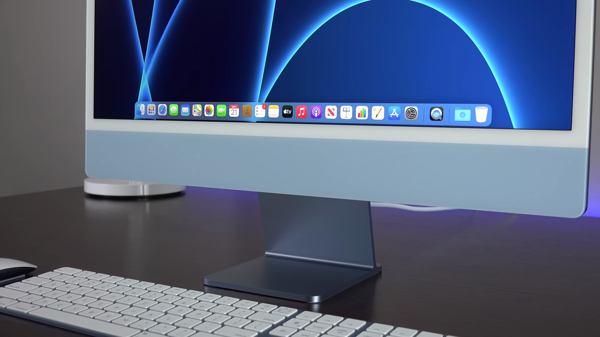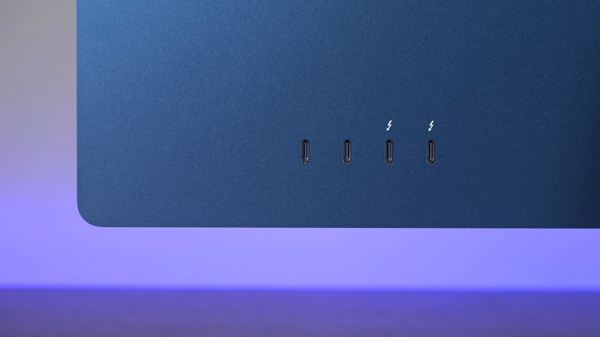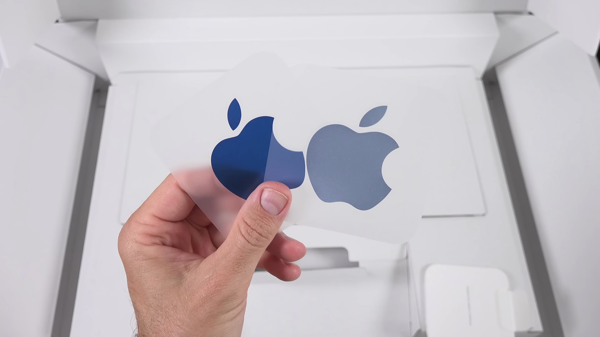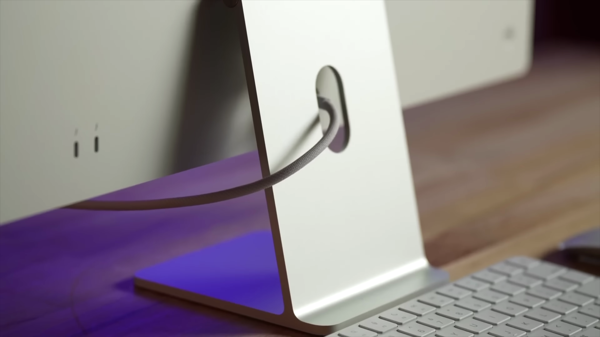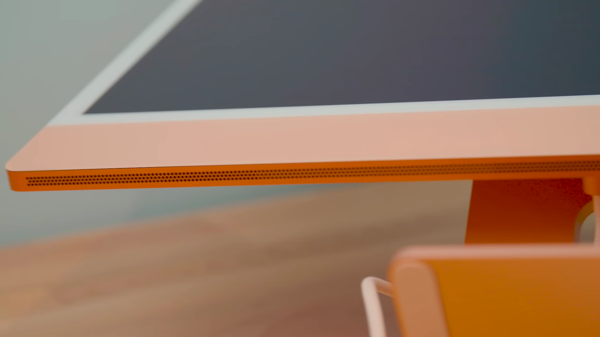Note: As an Amazon Associate I earn from qualifying purchases.
iMac or Mac Mini? My thoughts (2023)
Introduction
A question that many Apple users face is: iMac or Mac Mini? As my aging desktop signaled it was time to upgrade, I was drawn to the allure of Apple’s sleek iMac. Yet, the more pragmatic side of me couldn’t ignore the Mac Mini’s promise of flexibility. Below are my thoughts on it.
Prices
Check prices of the Apple Desktops on:
Photos
Click on photos to enlarge them:
Assessing the True Value of an iMac
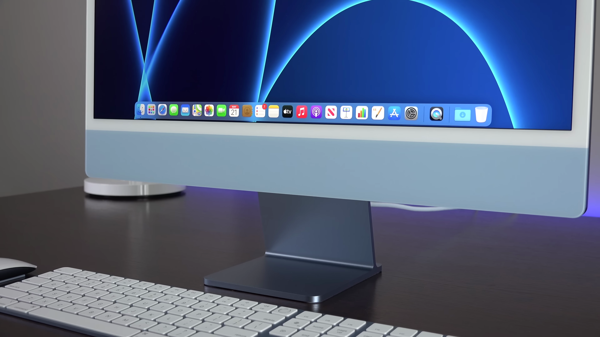
Assessing the true value of an iMac isn’t a straightforward matter; I’ve had to delve deep into the pros and cons, weighing each aspect against my personal needs and market offerings. The iMac represents a bundle of convenience and aesthetics, a testament to Apple’s design philosophy. I appreciate the all-in-one package—the elegance on my desk is unmatched. The 27-inch 5K Retina display is a feast for the eyes, offering vibrant colors and crisp details. And it’s not just about the display; the iMac includes a high-quality webcam, speakers, keyboard, and mouse. This is particularly notable as separate peripherals could eat into the cost savings and add clutter.
However, the iMac’s internals cannot be upgraded. It means that what you buy is what you get for the device’s lifetime. Given the pace of technology, that can be somewhat restrictive. Thankfully, Apple’s silicon chips have proven to be powerful and efficient, suggesting the system could remain capable for a decent number of years.
Speaking of which, I’ve been thinking about the configuration that would best suit my needs. The model with 16GB of RAM and 512GB SSD strikes a balance. It’s potent enough for heavy multitasking and large files, and though the storage isn’t massive, it’s sufficient given my reliance on cloud services.
The integrated components of the whole system must be taken into account too. If the webcam or speakers have issues, they’re not as easily replaced as with a more modular setup. For more insights on hardware modularity, take a look at My thoughts on the Apple Mac Mini M2 (2023): Thoughts. This is a risk, albeit a small one considering Apple’s build quality and warranty. It’s also worth mentioning that while the iMac looks superb right now, it might visually age as design trends shift.
On the subject of cost, while the upfront price might seem steep, I’ve compared it with building a similar setup around a Mac Mini and found that quality third-party components can be expensive. Take a look at the Dell UltraSharp U2723QE 27” for instance—while it’s a good monitor, it isn’t on the same level as iMac’s 5K Retina.
So, to summarize the arguments:
iMac Pros:
- Sleek all-in-one design.
- Comes with high-quality peripherals.
- Exceptional display quality.
- Potent performance with Apple Silicon.
iMac Cons:
- No internal upgrade options.
- Possibly higher upfront cost.
- Potential for single component failure.
- Aesthetic may not age as well.
I’m leaning towards the iMac. It represents a product designed for the user who values convenience, quality, and sleekness. While there is a price to pay, both literally and metaphorically, for such a tightly integrated system, the benefits of simplifying my workspace are a strong selling point.
The Longevity Factor of Mac Mini vs iMac

The longevity factor plays a huge role in deciding whether to opt for an iMac or a Mac Mini. On the one hand, I understand the allure of an iMac - it’s an all-in-one solution that’s elegant and clutter-free. Having a single, sleek device that takes care of everything is appealing, especially to someone like me who values desk space and aesthetics. But when it comes to long-term use and considering how technology evolves, the closed nature of the iMac becomes a drawback.
Here’s what I think about when weighing longevity:
Mac Mini:
- Upgradability: Component-wise, it’s limited, but still better than the iMac. The Mac Mini offers the flexibility to upgrade external peripherals and connect to higher-end monitors over time.
- Replacement Costs: When the Mac Mini’s performance doesn’t cut it anymore, you’re only replacing the computer part, not the entire setup which includes a potentially still-great monitor.
- Adaptability: The Mac Mini can adapt to different setups, which is essential as my workspace and technology needs evolve.
iMac:
- Monitor Quality: Yes, the iMac does come with a fantastic monitor that’s hard to beat in its price range. It’s one of the reasons I’d consider sticking with it for the short term.
- All-in-One Design: The simplicity of having everything integrated is not just about looks; it eliminates the need to manage a tangle of wires and multiple components.
- Cost-Effectiveness: At the outset, the iMac provides more bang for the buck as a complete package, and it should easily provide a solid performance for a good 5-7 years.
When thinking about the next decade, however, flexibility and adaptability stand out as key factors. Technology is changing, and my needs along with it. While my heart can be drawn to the immediate gratification and simplicity of an iMac, my head is telling me to consider the long game, which points me towards the Mac Mini.
Granted, there’s something a bit sad about pre-emptively considering the end-of-life for a device you’re just about to buy, but with the Mac Mini, I get the feeling of a safety net. It’s the kind of home tech decision that doesn’t just feel smart now, but one that’ll likely feel smart years down the line when I can recycle the peripherals and simply slot in the latest Mac Mini model.
The iMac, in all its glory, feels like a short- to mid-term relationship, whereas the Mac Mini and I are planning for the long haul. There’s a balancing act here between the immediate pleasure of unboxing a shiny new all-in-one and the more pragmatic, future-proofed satisfaction of a setup that can grow and change as I do.
In all, while the iMac wins on upfront appeal and certainly holds its own for a good stretch, I tend towards the Mac Mini for its promise of a lasting, adaptive companionship in my tech life.
Considering the Environmental Impact of Tech Choices

When making tech choices like whether to invest in an iMac or Mac Mini, I can’t help but consider the environmental impact. It’s a complex equation, looking at everything from manufacture through to disposal.
The iMac presents a more sustainable upfront choice — it’s one unit, fewer cables, less packaging. It looks clean and feels efficient which matches my personal ethos to reduce clutter and waste. However, this simplification has a trade-off. Once its serviceable life ends, you’re disposing of or recycling a larger, more complex device. Here’s what runs through my mind:
Pros of iMac for Environmental Impact:
Less initial manufacturing waste due to fewer components.
Fewer resources consumed due to the need for fewer accessories.
Single unit could imply lower energy consumption compared to separate units each drawing power.
Cons of iMac for Environmental Impact:
Disposal issues when technology ages since the monitor and computer cannot be upgraded or recycled separately.
More complex individual components could make it harder to recycle at the end of life.
Potential for earlier obsolescence if non-upgradable parts fail or can’t keep up with software demands.
In contrast, the Mac Mini seems to be a champion for longevity. You can swap out the main unit and keep peripherals, including a monitor that could outlast the device. This seems to be a more flexible approach, reducing waste as technology advances.
Pros of Mac Mini for Environmental Impact:
Ability to reuse peripherals like monitors and keyboards over longer periods and across multiple devices.
Easier recycling with separate components.
Potential for less material waste upon device upgrade.
Cons of Mac Mini for Environmental Impact:
More initial electronic waste with separate production of the computer and peripherals.
Greater potential for cable and accessory clutter, which could lead to the premature disposal of functioning items for aesthetics.
From what I’ve seen, neither choice is perfect, but each offers benefits and downsides from an environmental perspective. I lean towards the Mac Mini for its potential in minimizing e-waste over time. The ability to update only the necessary components feels inherently more responsible.
Moreover, initiatives like Apple’s trade-in program and third-party repair services play a role in extending the life and reducing the footprint of these devices. Websites like iFixit, which offer guides for repairing and upgrading tech, also contribute to the conversation, adding layers to the lifespan of products we think may be at their end.
Ultimately, I believe tech companies could reduce environmental impact by designing for durability and repairability, a strategy that seems to fit the Mac Mini model slightly better. That said, the iMac offers efficiencies of scale by integrating everything into one package. The choice isn’t easy, but it’s one that carries a weight beyond just hardware specs or aesthetic preference.
Predicting the Future Needs and Technology Trends

In contemplating the shifting landscape of technology and our growing reliance on computing power for both work and personal use, it’s clear that anticipating future needs is a challenge. As a consumer, I’m keenly aware that today’s top-of-the-line spec could be tomorrow’s bottleneck. This reality positions the decision between an iMac and a Mac Mini not just as a question of current needs, but of predicting the trends that will define the future of computing.
Considering the rapid advancement of chip technology, a key factor in my decision-making process is the length of time before hardware becomes obsolete. The new Apple M-series chips have certainly raised the performance bar, suggesting that an M3 iMac could potentially meet my needs for several years, even as software becomes more demanding. However, this could be a double-edged sword, as the pace of advancement may also shorten the lifespan of newer models.
The Mac Mini’s modularity offers a significant advantage in this regard. Being able to upgrade the monitor or utilize the Mac Mini with a variety of peripherals could extend its useful life considerably. Although its form factor lacks the aesthetic cohesion of the iMac, this trade-off seems worth it when considering long-term flexibility and potential cost savings.
Of course, new technological developments could shift these considerations. Developments like cloud computing and streaming services reduce the need for local computing power, which might extend the useful life of either choice. Additionally, considering the increase in remote work and virtual collaboration, the built-in webcam and microphone quality become more significant, and here the iMac currently leads the pack.
Here are the crux points I’m mulling over:
Pros for iMac:
- All-in-one design simplifies the workspace
- High-quality display and sound out of the box
- Potentially more cost-effective upfront
- Benefit of the new M3 chip
Cons for iMac:
- Upgradability is severely limited
- Long-term cost-effectiveness is uncertain
Pros for Mac Mini:
- Flexibility to upgrade peripherals separately
- Potentially longer lifespan
- Small form factor allows for portability between workspaces
Cons for Mac Mini:
- Additional costs for high-quality peripherals
- Aesthetic clutter and potential for a more complex setup
As I weigh the options, I can’t ignore the impact of upgrades and obsolescence. Despite the allure of the iMac’s all-in-one simplicity, I’m leaning toward the Mac Mini for its adaptable nature. It seems prudent to opt for a setup where upgrades can be made piecemeal, allowing me to respond to new technologies as they emerge without needing to replace an entire system.
In conclusion, choosing between the elegance and simplicity of an iMac and the upgradability and flexibility of a Mac Mini is not easy. It boils down to where one stands on the spectrum between appreciating present-day cohesion and anticipating future needs and trends. While the final decision rests on one’s individual situation and values, leaning into adaptability may just be the wiser bet in a world where change is the only constant.
